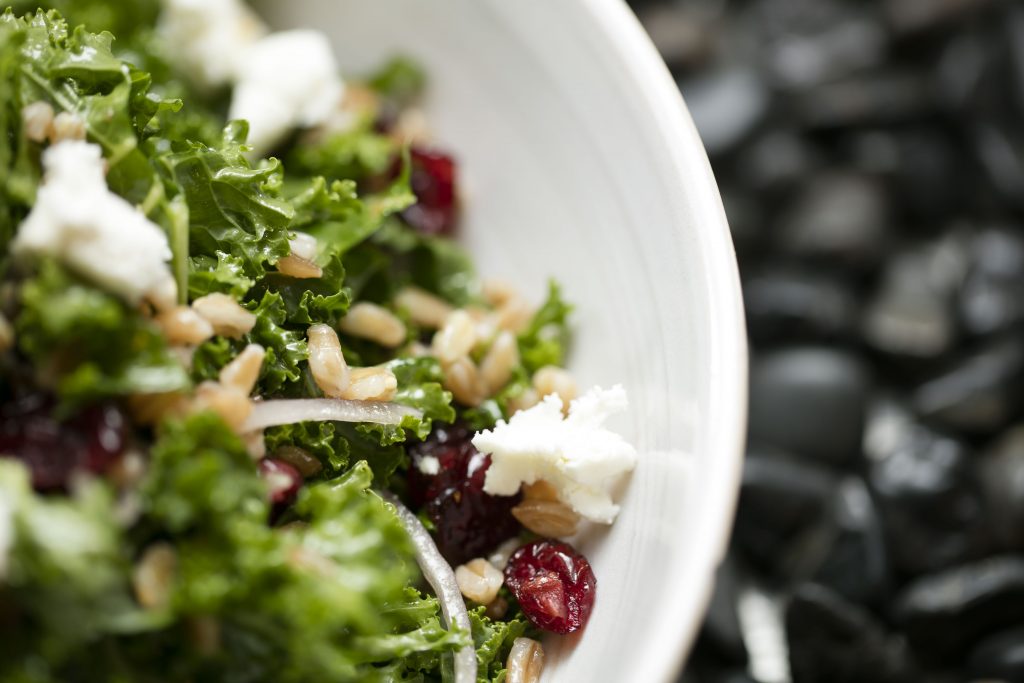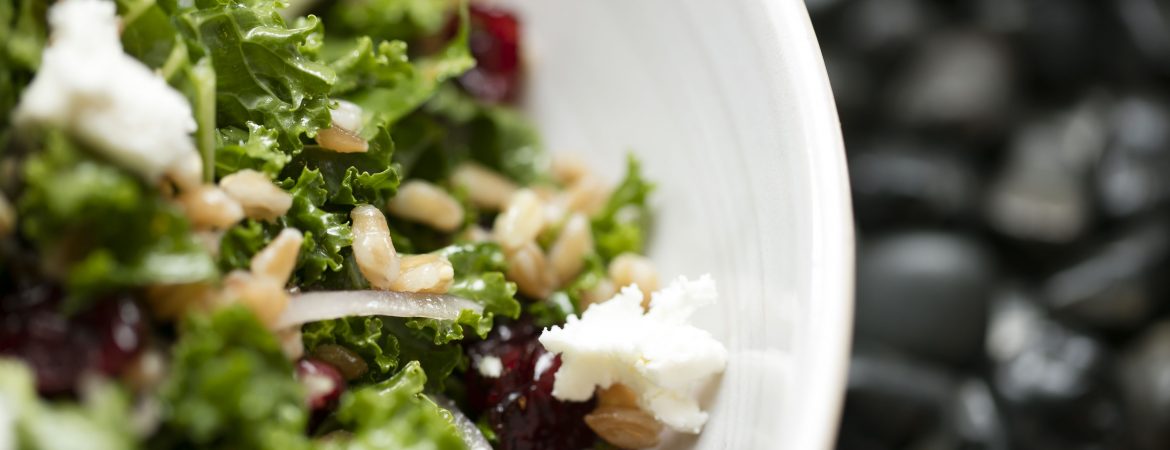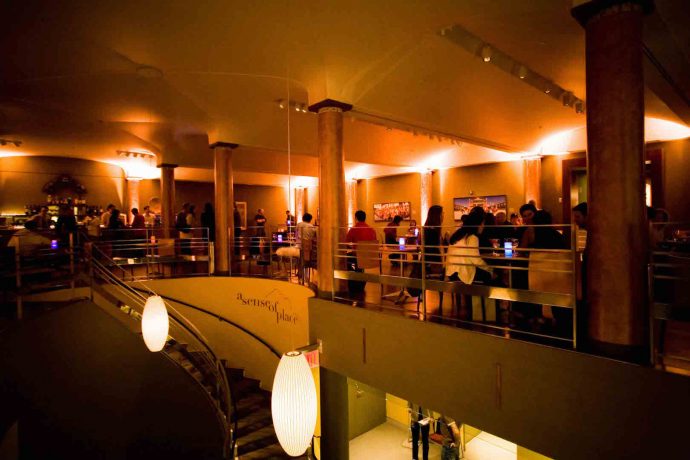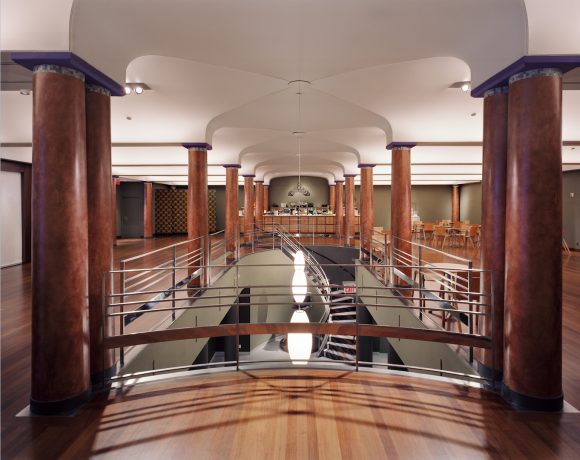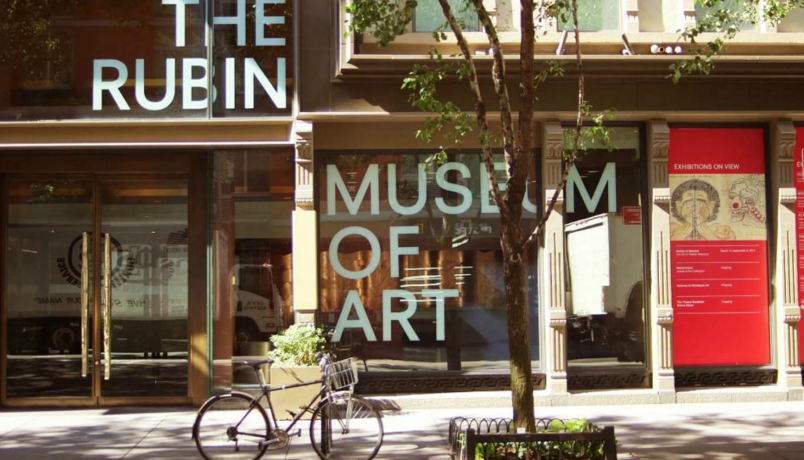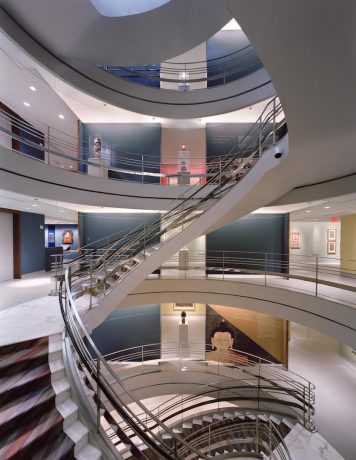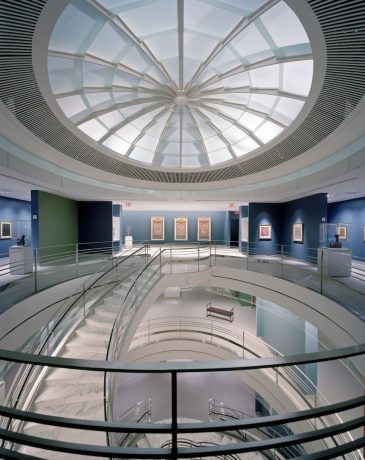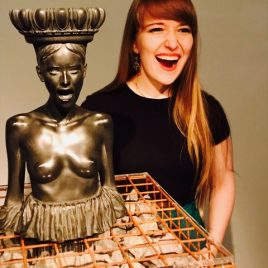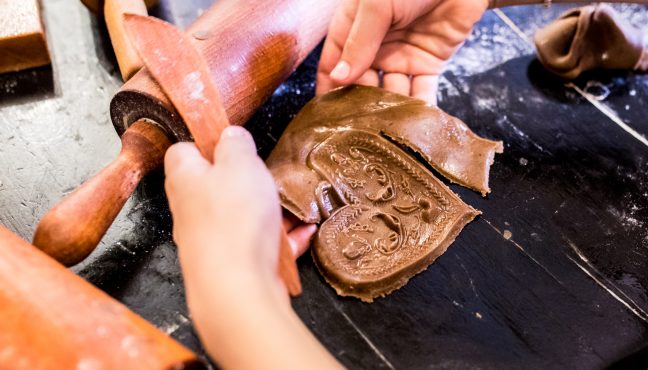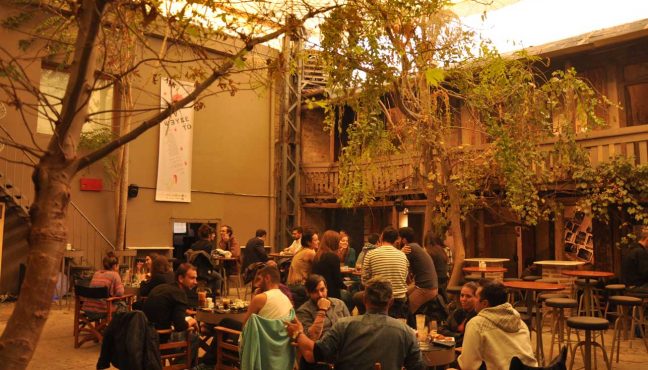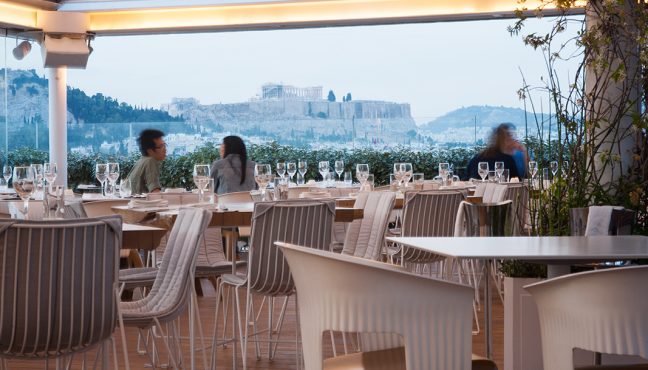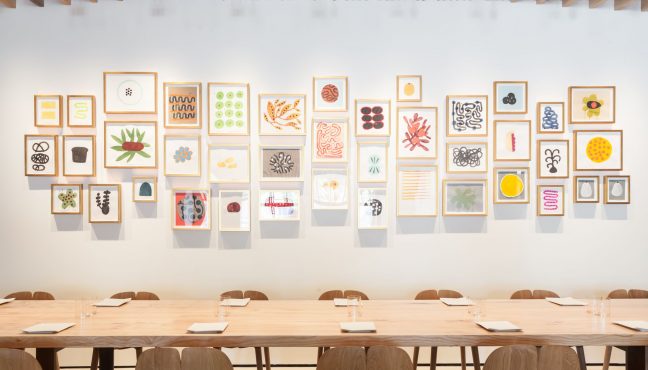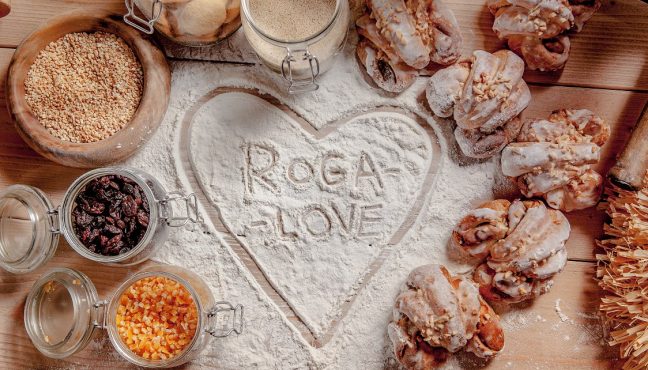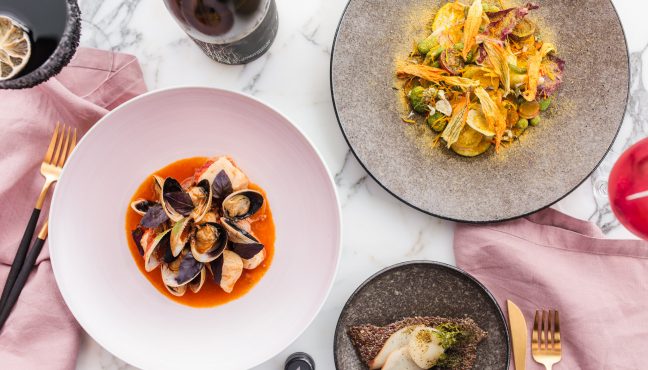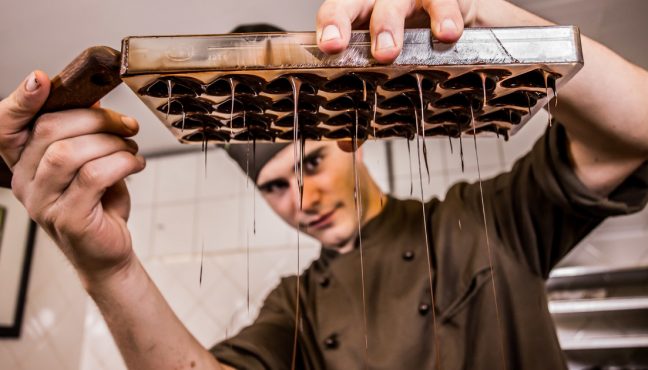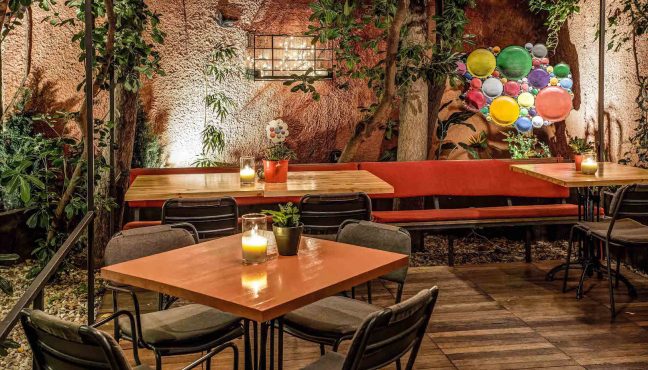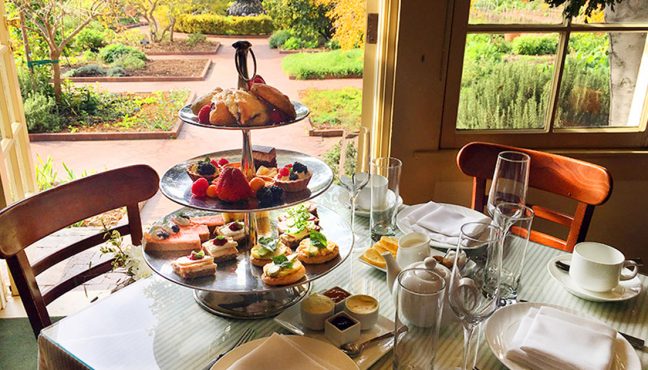It is a treat when a museum restaurant offers a smooth transition from the art world to the real world. The juncture is of prime importance when you visit museums such as New York’s Rubin Museum of Art that invites you to explore art of the Himalayas, India, and neighboring regions.
After seeing over 2,500 objects spanning more than 1,500 years, including works of great depth from the Tibetan plateau, with examples from surrounding regions including Nepal, Bhutan, India, Pakistan, Afghanistan, China and Mongolia, as well as after visiting the Tibetan Buddhist Shrine Room you do feel the need for a Zen-like atmosphere to catch your breath. Café Serai on the ground floor allows you to taste the most wonderful Asian teas, Tibetan and Indian specialties, dwell on the collection that you’ve just seen and make powerful connections between contemporary life and cultures of South Asia before plunging into the vibrant Chelsea neighborhood. You can attend Café Serai without the museum ticket, although we suggest visiting the wonderful Rubin Museum that will boost your appetite and make you appreciate and understand the menu better. We talked to Robin Carol – Public Relations & Marketing Manager and Ali Loukzada – the chef himself!
The wonderful Café Serai is a continuation of the museum, a place to dwell on what you’ve seen in a relaxing atmosphere. Was it envisioned by the architect during the renovation, was the space retained from the building’s past life or did it open later?
Robin Carol: Our visitors frequently tell us that the Rubin Museum is an oasis, and the building certainly speaks to that. The ambience at Café Serai is the perfect place to relax after a visit to the galleries and enjoy the aromas and flavors of the Himalayas. The original Rubin Museum of Art structure was designed by Beyer Blinder Belle and was occupied by Barneys New York. The Café space was Barneys shoe, purse, jewelry section and it was re-envisioned to be a café and shop space when the museum was created. Having a café and shop, and making the museum both an art and a social experience, was always a goal from its inception. We love that the Rubin Museum is a place to meet new and old friends, experience new ideas and transformational experiences, and to try new dishes like momos, a popular dumpling eaten in Tibet and Nepal.
For some the Café can be a start of a museum visit, not a continuation. Has it even happen that visitors would wonder into the Café to find out that it was a part of a museum and walk to see the artworks, inspired by a meal?
Art and cuisine are similar because they are both such defining aspects of culture. At the Rubin Museum, offering both experiences together enhances a visit for anyone who comes through our doors. Café Serai is a great local destination for people who live or work in Chelsea to have lunch or a cocktail, so it is sometimes the first point of entry for guests and that inspires them to see more of the museum. Our Himalayan Happy Hour on Wednesdays and K2 Lounge on Fridays are both destinations for New Yorkers and tourists alike to enjoy drinks and camaraderie, with lots of alumni organizations, birthday parties, and other groups making reservations in our unique setting. For many of these guests, it’s their first visit to the museum and they discover what’s up in the galleries after their meal or drink! However, the majority of people come to the Rubin Museum because they know they can experience so many surprising things in one visit: a moment of reflection in our art galleries, a shift in perspective at one of our theater programs, and a new taste sensation at Café Serai.
Does the menu change with the season or maybe it is altered when the exhibition changes?
Yes, our menu changes seasonally, and we frequently have new menu items and cocktails inspired by the exhibitions in the galleries. For example, while our exhibition, Bodies In Balance, was on view, visitors could order items in the café that corresponded to the specific forces in Tibetan medicine.

Tea selection is most wonderful, were the teas specially made for Café Serai?
We worked with a very experienced tea vendor to choose a selection of teas that evoke many of our programs and artworks. For example, we have a Happiness blend that is one of most popular varieties.
The Rubin and Café Serai offer Happy hour and special programs, what sensorial activities (TASTE, TOUCH, LISTEN) do you offer to the guests?
The Rubin offers a marketplace of ideas and experiences – Brainwave talks and musical concerts, classes and educational programs, K2 Friday Nights and Himalayan Happy Hour, and a wide range of exhibitions focused on art from the Himalayas. We don’t have concerts every day, but you’re always sure to be surprised by the array of experiences we offer.
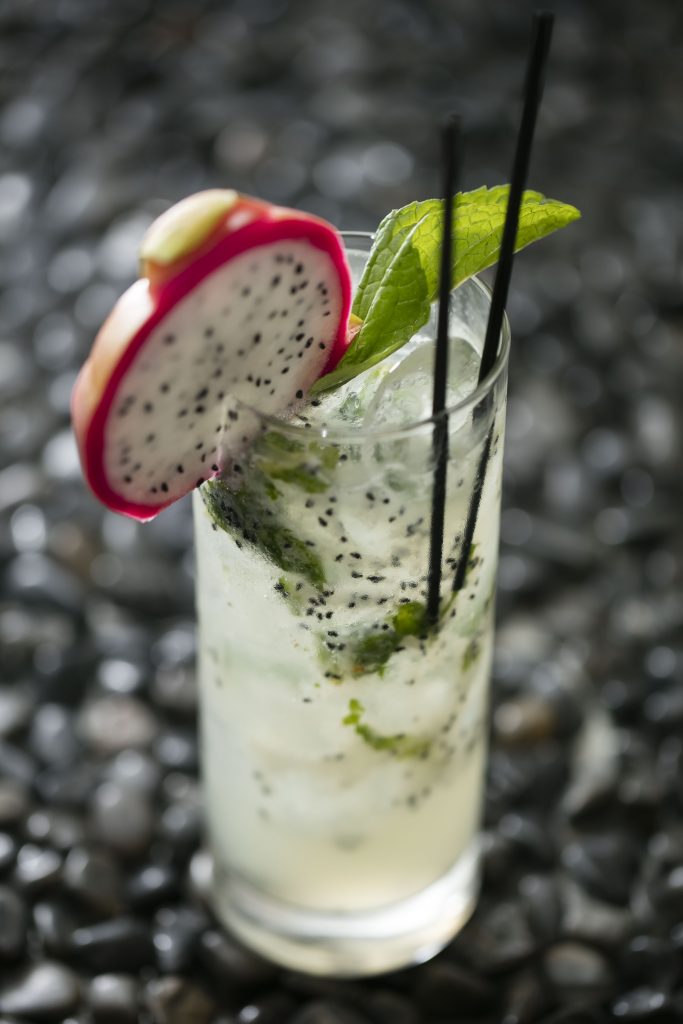
But Wednesday and Friday are special for café visitors, right?
Acoustic Wednesday nights at the Museum include Himalayan Happy Hour from 6:00 p.m.–9:00 p.m., where guests can enjoy an artful after-work happy hour at Café Serai with live music and exceptional programming in the theater. We host a regular Wednesday evening concert called Spiral Music, which features acoustic musicians at the base of our spiral staircase, while the galleries stay open late. Museum admission is free every Friday night from 6:00 to 10:00 p.m. during K2 Friday Nights and Café Serai becomes the K2 Lounge, offering a special pan-Asian tapas menu, and Happy Hour from 6:00–7:00 p.m. with a 2-for-1 special on all beer, wine, and well drinks. Music is provided by the evening’s DJ. It’s a great way to kick off a weekend with friends or even come for a date with a special someone. Visitors can explore the galleries on their own, take a tour, or participate in weekly programs like our late-night Cabaret Cinema screenings as well as musical concerts and talks.
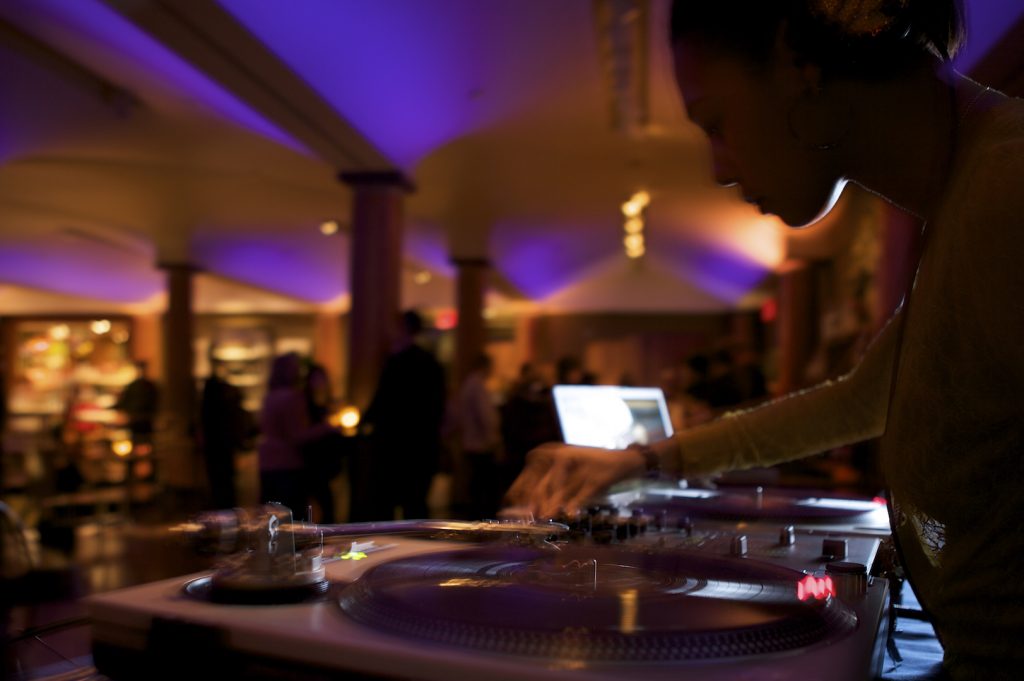
We had to say a few words to the Executive chef Ali Loukzada and asked him about exhibition-inspired dishes and even got a recipe!
The menu is extensive, but have you ever created special exhibition-inspired meals? Or maybe there are some unique collection-inspired dishes on the menu?
Walking around the museum is always inspiring for me – often I see artwork that I can translate visually to the plate, using ingredients with colors that are very similar. And most of our dishes are inspired from artwork that has been or is being exhibited in the museum. Some of the cuisine is also inspired by the Himalayan region, and more traditional dishes in Tibet, Nepal and surrounding areas. When possible, the café collaborates with curators and sometimes even the artists on the current exhibitions. For example, many of the cocktails at the café right now are inspired by our exhibition Nepalese Seasons: Rain and Ritual, which showcases the monsoon season and artwork tied to the weather. Some of the drinks are also influenced by ideas like mindfulness that are prevalent in our programs and artwork.
A few examples of exhibition and program inspired dishes and cocktails:
Exhibition: Nepalese Seasons: Rain and Ritual
Cocktail: Summer in Patan, with pomegranate vodka, grapefruit juice, honey syrup, mint, is inspired by the city in Nepal
Exhibition: Steve McCurry India
We featured photographer Steve McCurry’s favorite dish from his travels in India: Vegetable Biryani
Program Series: Brainwave Emotion
The café featured weekly specials, each related to a different emotion. For Humor, guests could tell a joke to get a free treat. For Shame, we featured a shameless triple chocolate cake!
Exhibition: Bodies in Balance
We provided entrée recommendations for the three forces in Tibetan Medicine.
Program Series: Mindfulness Meditation
We offer several “mocktails” including the Lavender Exhale with lychee juice, lavender tea, mint, club soda, and Mind Over Mint with pineapple juice, cucumber, lemonade, mint, club soda
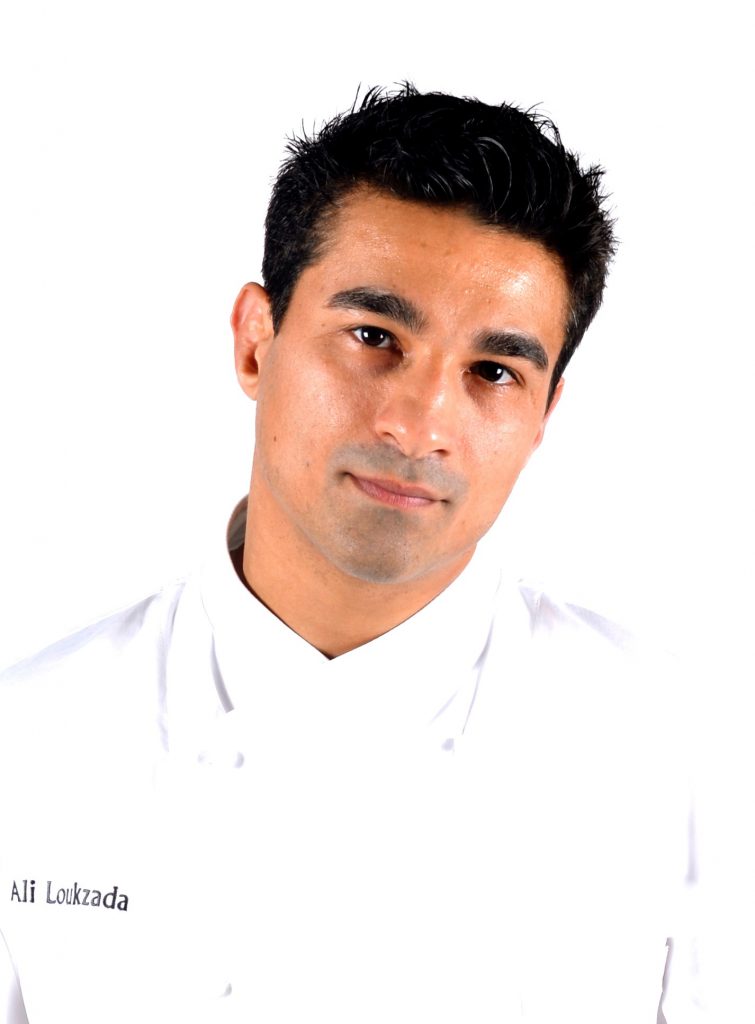
What would be the most surprising thing that you, as a chef, learned about museums while working in Cafe Serai?
Being a chef at a museum restaurant is fun as it’s more challenging – you have to be creative with every season as well as with the changing programs and exhibitions. Also, because of the risks to priceless artifacts and paintings, gas burners and deep fryers are not allowed. Using only electric gives me limitations, but also pushes me to be more creative.
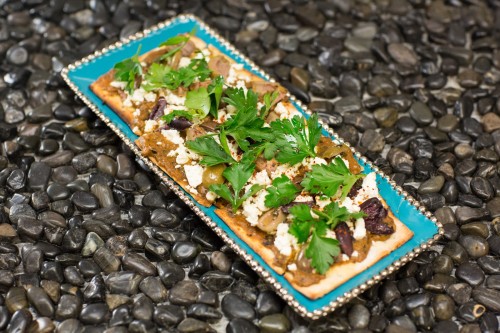
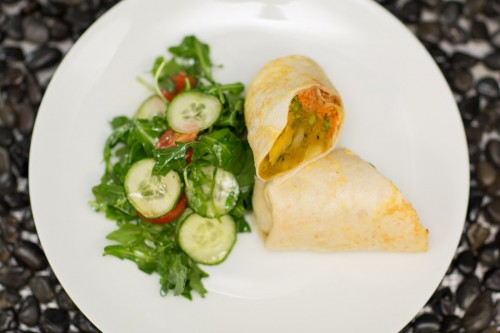
If it is not top-secret, could you share an exhibition-inspired or collection-inspired recipe?
Green papaya, jack fruit and mango salad
Green papaya 1 small
Green mango 1 whole
Jack fruit small piece or canned 1 can or 3 pc of fresh jackfruit from the market
Red Thai chili 1 depends on how spicy you would like
Roasted peanuts 1 cup
Fresh basil 1 spring
Cilantro 1 bunch
Lime 1 whole
Cherry tomato 1 pint
Radish optional as garnish
Fish sauce or salt to taste
Mortar and pestle 1 to muddle
Method: Peel the papaya mango and julienne it thin, deseed the jackfruit and cut into medium dice. In a motor and pestle add in the Thai chili, cilantro, basil, half of the juice from the lime with the skin, fish sauce or salt and if you like it more spicy add more chili or if you want it more aromatic add more herbs. Muddle every thing together then add in the papaya the mango and muddle every thing together while mixing every thing consistently, finish with the tomato roasted peanut, jackfruit. Serve in the mortar and pestle or on a plate.
